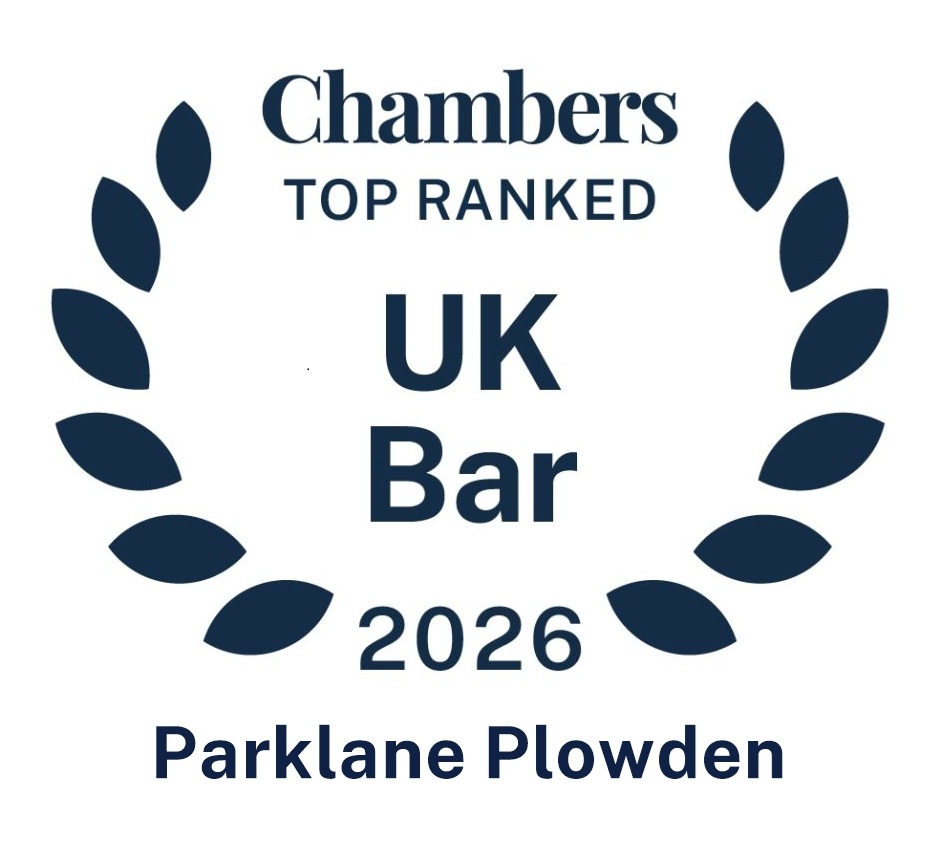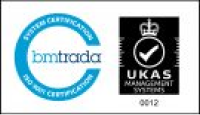<p align="JUSTIFY"><strong><img src="/images/welcome_gareth_price.jpg" alt=""></strong></p>
<p align="JUSTIFY"><strong>By <a title="Gareth Price" href="/barristers/gareth-price/" target="_self" rel="noopener">Gareth Price</a></strong></p>
<p align="JUSTIFY"><strong>Introduction</strong></p>
<p align="JUSTIFY">The effect of Qualified One-way Costs Shifting (QOCS) is that any costs order made against the Claimant is enforceable only up to the amount of any damages and interest recovered by the Claimant. Costs ‘protection’ is thereby afforded to Claimants.</p>
<p align="JUSTIFY">This article considers the case law on QOCS and the boundaries of the protection it provides.</p>
<p align="JUSTIFY"> </p>
<p align="JUSTIFY"><strong>When will QOCS apply?</strong></p>
<p align="JUSTIFY">CPR r.44.13 provides that QOCS applies to proceedings which include a claim for damages for personal injuries, under the Fatal Accidents Act 1976 (‘the FAA’) or pursuant to s.1(1) of the Law Reform (Miscellaneous Provisions) act 1934 (‘the LRA 1934’). Otherwise, QOCS protection will not apply. Nor will it apply if the Claimant has entered into a pre-commencement funding arrangement (for our current purposes, usually a pre-April 2013 CFA).</p>
<p align="JUSTIFY">In <em>Wagenaar v. Weekend Travel Ltd</em> [2014] EWCA Civ 1105, the Court of Appeal considered the applicability of QOCS.</p>
<p align="JUSTIFY">The Claimant brought a claim under the Package Travel Regulations 1992 following a skiing accident. The Defendant joined the Claimant’s ski instructor as a Third Party, seeking an indemnity or contribution from her for any damages that might arise.</p>
<p align="JUSTIFY">Both claims were dismissed, and the trial judge ordered that costs follow the events. However, those costs orders were not to be enforced because of the application of QOCS. The Defendant and Third Party appealed. The Defendant appealed on several bases, including that QOCS did not have retrospective effect. The Third Party appealed on the basis that the claim against her did not fall within the QOCS ambit.</p>
<p align="JUSTIFY">The appeal court held that QOCS do indeed have retrospective effect.</p>
<p align="JUSTIFY">It further held that ‘proceedings which include a claim for damages for personal injuries’ must be focused on claimants who ‘are themselves making a claim for damages for personal injuries.’ Construing the term ‘proceedings’ more widely than that would not be in accordance with the purpose of the rule. Consequently, the Defendant did not benefit from any protection as against the adverse costs order from the Third Party. Whilst the trial judge held this would create injustice to the Defendant, who had successfully defended the claim, the appeal court did not.</p>
<p align="JUSTIFY">Therefore, the applicability of QOCS seems limited to Claimants who, possibly amongst other types of claims, claim damages for personal injury. Multiple Defendants do not gain that protection as between themselves.</p>
<p align="JUSTIFY"> </p>
<p align="JUSTIFY"><strong>When will QOCS not apply?</strong></p>
<p align="JUSTIFY">In addition to the clarification from the Court of Appeal discussed above, QOCS protection is automatically lost if the claim is struck out because the claimant had no reasonable grounds for bringing the claim, the proceedings were an abuse of the court’s process or the conduct of the Claimant or someone acting on his behalf obstructed the just disposal of the proceedings.</p>
<p align="JUSTIFY">Further, that same ‘protection’ is lost, conditional on the court’s say so, if the claim is found on the balance of probabilities to be fundamentally dishonest.</p>
<p align="JUSTIFY">It therefore follows that it is in the Defendant’s interest to have a claim struck out for one of the above reasons, rather than have a court determine that the claim is fundamentally dishonest, as the court’s permission would not be required in the former circumstances.</p>
<p align="JUSTIFY">This would bring into play the case of <em>Fairclough Homes Limited v. Summers</em> [2012] UKSC 26 (and the jurisprudence since that decision) in which the Supreme Court held that it may, although only in ‘in the very exceptional case’, be just and appropriate for a court to strike out an action after a trial. Interestingly, that decision was given before the introduction of QOCS and the Supreme Court felt that such a step would only be just and appropriate in ‘the very exceptional case’ because the Claimant, if found to be fraudulent, would ‘face a substantial order for indemnity costs.’ That, of course, is not the case if QOCS protection applies. Possibly, the likelihood of strike out after trial for abuse of the courts process or obstructing the disposal of proceedings (due to dishonesty or fraud) increases where that costs liability is dependent upon such an order.</p>
<p align="JUSTIFY">Alternatively, where a Defendant is <em>unable</em> to seek such an order, or fails to persuade the court to that that step, QOCS protection is <em>provisionally</em> lost if the court finds that the claim is fundamentally dishonest.</p>
<p align="JUSTIFY"> </p>
<p align="JUSTIFY"><strong>What does ‘fundamentally dishonest’ mean?</strong></p>
<p align="JUSTIFY">Arguably, it does not mean fraud. Fraud requires the dishonest making of a false representation with the intention of making a gain for oneself or another (or causing loss to another or exposing them to the risk of such loss). One <em>may</em> be dishonest without seeking such a result – although in the context of personal injury litigation this may be rare. The prefix ‘fundamentally’ qualifies the degree of the dishonesty. All fraudsters may be fundamentally dishonest, but are all those who are fundamentally dishonest fraudsters?</p>
<p align="JUSTIFY"> </p>
<p align="JUSTIFY">In his third lecture, Jackson LJ commented that:</p>
<p align="JUSTIFY">"I agree that if the Claimant’s claim is fraudulent or is struck out as an abuse of process, the Claimant should forfeit costs protection."</p>
<p align="JUSTIFY">This statement envisages that a finding of fraud will automatically lead to losing costs protection. However, ‘fraud’ must be different to ‘fundamentally dishonest’ or else that phrase would not have been chosen.</p>
<p align="JUSTIFY">At the end of April 2014, HHJ Moloney QC gave judgment in <em>Gosling v. Hailo & Screwfix Direct</em>, a County Court decision. It remains the only reported case on the issue of fundamental dishonesty.</p>
<p align="JUSTIFY">The facts, in brief, were that the Claimant suffered a knee injury whilst using a defective ladder – manufactured by D1 and sold to the Claimant by D2. His pleaded claim was in the region of £80,000. Surveillance footage of the Claimant showed a level of daily functioning well in excess of what he reported to the experts and in his witness statement. In correspondence, D2 asserted that it would contend that the claim was fundamentally dishonest. The claim settled against D1 for £5,000 plus costs and the claim against D2 was discontinued.</p>
<p align="JUSTIFY">D2 applied for permission to enforce the adverse costs order against the Claimant.</p>
<p align="JUSTIFY">After considering the procedural steps a court should go through when determining if, how and when the issue of fundamental dishonesty should be approached, HHJ Moloney QC found that, on the allegation as to quantum, the claim was indeed fundamentally dishonest. This was largely based on the surveillance evidence.</p>
<p align="JUSTIFY">The judge held the phrase should be ‘interpreted purposively and contextually’, requiring a consideration of whether the Claimant was <em>deserving</em> of QOCS protection. To achieve this, the judge was of the view that QOCS envisaged:</p>
<p align="JUSTIFY">"two levels of dishonesty: dishonesty in relation to the claim which is not fundamental so as to expose such a Claimant to costs liability, and dishonesty which is fundamental, so as to give rise to costs liability."</p>
<p align="JUSTIFY">'Incidental’ or ‘collateral’ matters, about which the claimant had been dishonest, would not lead to costs liability. Dishonesty which ‘went to the root of either the whole of [the] claim or a substantial part of [the] claim’ would render the claim fundamentally dishonest.</p>
<p align="JUSTIFY">Ultimately, valuing about half of the £80,000 claimed as being founded on dishonesty, HHJ Moloney QC held the claim to have been fundamentally dishonest. The judge did not regard it as necessary for the dishonesty to stretch to the entirety of the damages for the claim, as a whole, to be fundamentally dishonest. This approach is consistent with the Supreme Court’s guidance in <em>Fairclough</em>.</p>
<p align="JUSTIFY"> </p>
<p align="JUSTIFY"><strong>What must be fundamentally dishonest?</strong></p>
<p align="JUSTIFY">CPR r.44.16(1) is clear. Where the ‘claim’ is found, on the balance of probabilities, to be fundamentally dishonest, an order for costs may be enforced to the full extent with permission from the court. Not the Claimant. Is there a material difference? Presumably, only if the dishonesty of the Claimant had the effect of rendering ‘the root’ or a ‘substantial part’ of the claim dishonest would the rule bite. But it may be the case that the actions of someone other than the Claimant has rendered the ‘claim’ fundamentally dishonest.</p>
<p align="JUSTIFY"> </p>
<p align="JUSTIFY"><strong>When will the issue of fundamental dishonesty be determined?</strong></p>
<p align="JUSTIFY">As one might expect, and as is provided for by the Practice Direction to the QOCS rule, any ‘allegation that the claim is fundamentally dishonest [will] be determined at the trial.’ This, however, is interesting as it implies that an ‘allegation’ has been made before the trial begins. Does this mean that a formal pleading that the claim is fundamentally dishonest is necessary before the mater can be determined at trial? Or is merely correspondence to that effect sufficient?</p>
<p align="JUSTIFY">In <em>Gosling</em>, the issue had been raised, and the allegation made, in correspondence. It is settled case law that fraud must be pleaded by a Defendant if such an allegation is to be made. That, however, is an allegation that goes to the merits of a claim. QOCS concerns costs liability only and it is the author’s view that court’s will be slow to find that the allegation that the claim is fundamentally dishonest must be expressly pleaded before a court can be determined by a court at trial.</p>
<p align="JUSTIFY"> </p>
<p align="JUSTIFY"><strong>What if the claim does not reach trial?</strong></p>
<p align="JUSTIFY">Further, if the claim settles, only in ‘exceptional circumstances’ would issues arising from such allegations be determined by a court in those proceedings. If a claimant files a notice of discontinuance, a defendant may seek a direction from the court that any issues of fundamental dishonesty go on to be determined at a hearing, as occurred in <em>Gosling</em>.</p>
<p align="JUSTIFY">Importantly, in <em>Gosling</em>, it was held that it will not always be necessary for a court to hear oral evidence from the Claimant before determining whether the claim is fundamentally dishonest.</p>
<p align="JUSTIFY"> </p>
<p align="JUSTIFY"><strong>What protection is lost is the claim is fundamentally dishonest?</strong></p>
<p align="JUSTIFY">As noted above, such a finding does not automatically lead to losing costs protection.</p>
<p align="JUSTIFY">The Claimant loses the QOCS protection only if, having had his claim be found to be fundamentally dishonest, the court goes on to give permission for the costs to be enforceable. Whilst it may be rare for a court to take the step of making such a finding and not go on to give such permission, the permissive wording of the rule gives Claimants a last chance of saving themselves.</p>
<p align="JUSTIFY">Further, Practice Direction 12.4(d) permits the court to order the Claimant to pay the Defendant’s costs ‘attributable’ to the claim having been found to be fundamentally dishonest. This would give the Court the power to allow the Defendant to enforce only those costs which have been expended on the part of the claim which has led to it having been found fundamentally dishonest. The court declined to apply such a distinction in <em>Gosling</em>, but it is a point not to be missed by a Claimant whose claim has been found to be fundamentally dishonest.</p>
<p align="JUSTIFY"> </p>
<p align="JUSTIFY"><strong>Fixed fee cases</strong></p>
<p align="JUSTIFY">Claims which have exited the Portal are subject to the fixed fees (‘fixed fee cases’) set out in Part 45, Section IIIA. Consequently, any costs orders made in favour of a Defendant in fixed fee cases are regulated by reference to the costs recoverable by the Claimant pursuant to tables 6C and 6D.</p>
<p align="JUSTIFY">Therefore, if the Claimant recovers, say £15,000 in damages and has failed to better the Defendant’s Part 36 offer in doing so, the Claimant is liable for the Defendant’s costs from the date of expiry of the relevant period in the normal way. Those costs, however, are assessed by reference to the fixed fee tables and are not costs at large.</p>
<p align="JUSTIFY">QOCS applies to fixed fee cases. Therefore, the Claimant, in fixed fee cases, has double protection, in that not only are the amount of costs that he or she may be liable for fixed, such costs order are not enforceable.</p>
<p align="JUSTIFY">However, the protection as to the amount of costs (and, of course, the principle itself) is lost if, in a fixed fee case, the claim is struck out for one of the reasons mentioned above or the claim is found to be fundamentally dishonest.</p>
<p align="JUSTIFY"> </p>
<p align="JUSTIFY"><strong>Does one include CRU payments when assessing the aggregate amount of damages?</strong></p>
<p align="JUSTIFY">This question was expressly left open by HHJ Moloney QC in <em>Gosling</em>.</p>
<p align="JUSTIFY">CPR r.44.14(1) provides that costs orders may be enforced ‘only to the extent that the aggregate amount in money terms of such orders to does not exceed the aggregate amount in money terms of any orders for damages and interest made in favour of the Claimant.’ The rule is therefore not explicit on the point.</p>
<p align="JUSTIFY">Damages is defined in the CPR glossary as ‘a sum of money awarded by the court as compensation to the Claimant.’</p>
<p align="JUSTIFY">The Social Security (Recovery of Benefits) Act 1997 provides for the Defendant to repay to the state any benefits that have been, or are likely to be, paid to the Claimant in respect of the accident. Such payments do not go to the Claimant and, arguably, he is not awarded such sums as compensation. Further, to include such sums, would expose the Claimant to an increased costs risk, despite the Claimant having recovered damages from a tortfeasor, but possibly not having recovered sufficient damages to cover any such order. This seems contrary to the aim of the rule. In the author’s opinion, payments to the CRU would not be included in assessing the ‘aggregate amount in money terms of any order for damages and interest made in favour of the Claimant.’</p>
<p align="JUSTIFY"> </p>
<p align="JUSTIFY"><strong>Conclusion</strong></p>
<p align="JUSTIFY">Sir Rupert Jackson envisaged that QOCS would achieve a social policy goal of protecting Claimants who <em>deserved</em> protection against adverse costs orders. That concept, of interpreting QOCS so as to afford protection to those that deserve it and not to those that don’t, was employed by HHJ Moloney QC in <em>Gosling</em>. Further, but not expressly, it was employed by the Court of Appeal in <em>Wagenaar</em>, by holding that it was not designed to protect commercial entities who may seek contributions from one another.</p>
<p align="JUSTIFY">Several questions posed in this article are without authority as yet. A reasonable guess would be that, as the jurisprudence develops on this topic, posing oneself the further question: ‘is this party deserving of costs protection?’ will be key in answering them. At the boundaries of an otherwise simple proposition, the protection afforded by QOCS will remain open to argument.</p>







